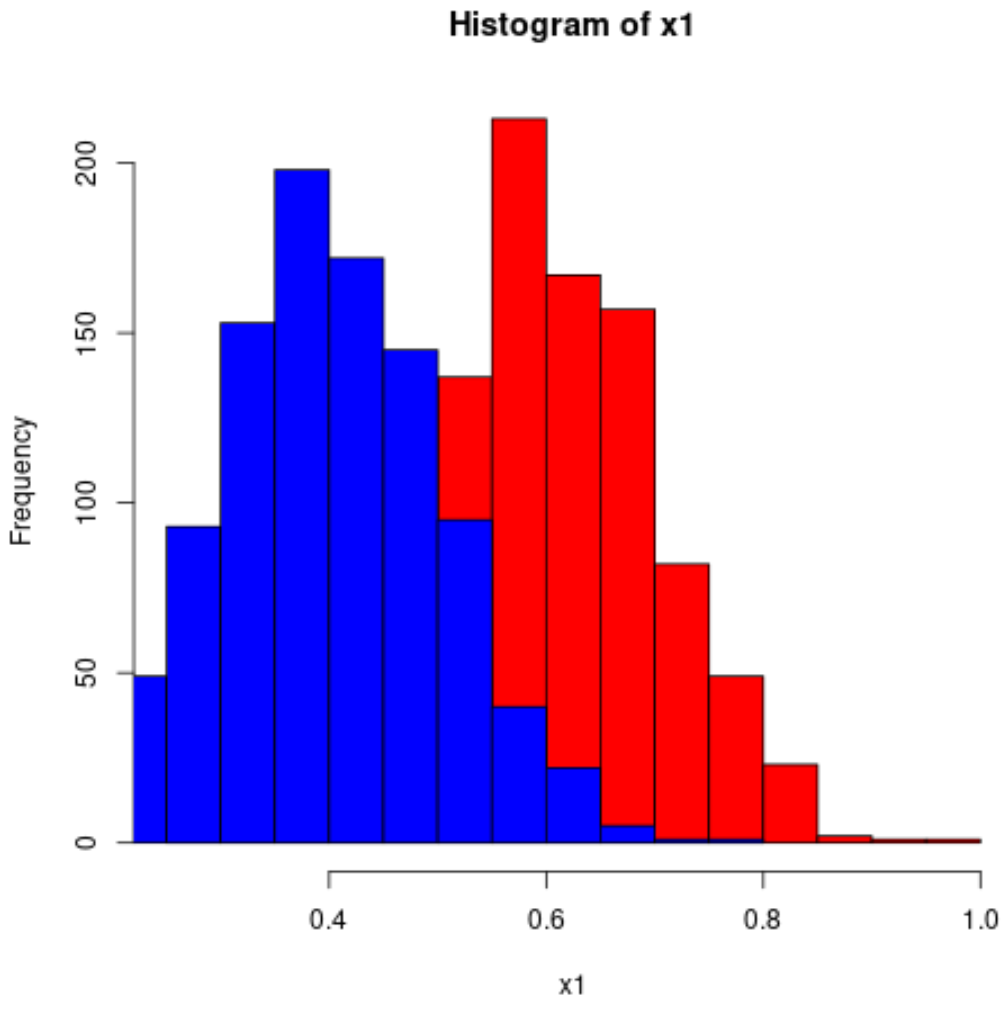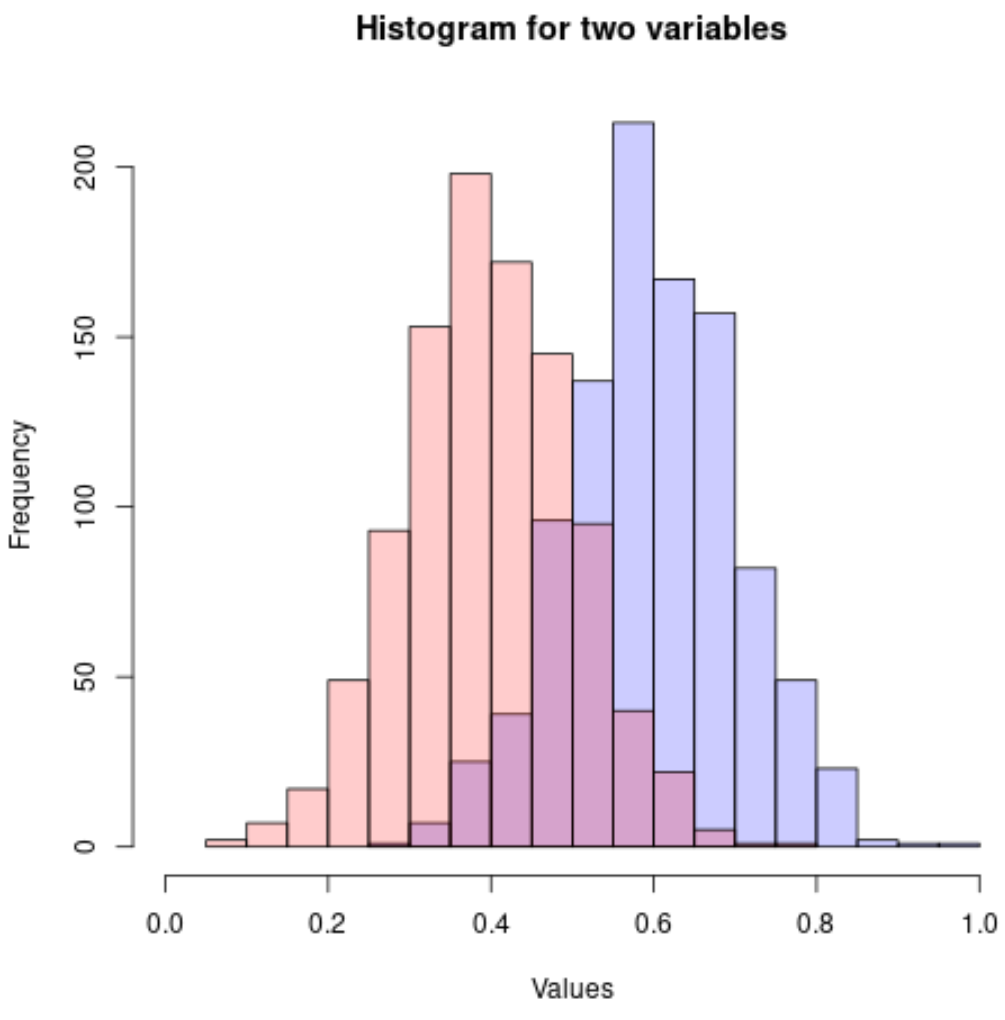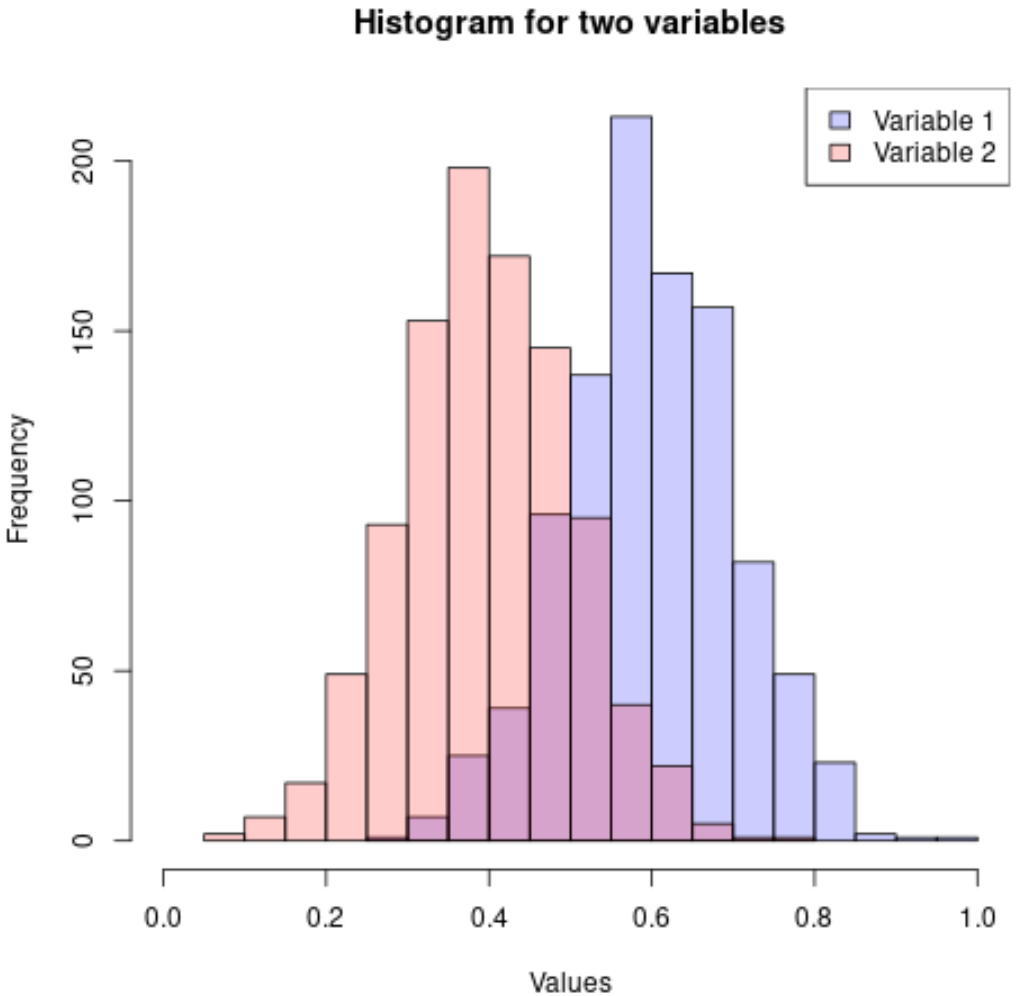Come creare un istogramma di due variabili in r
Un istogramma è un modo utile per visualizzare la distribuzione dei valori per una determinata variabile.
Per creare un istogramma per una variabile in R, puoi utilizzare la funzione hist() . E per creare un istogramma per due variabili in R, puoi utilizzare la seguente sintassi:
hist(variable1, col=' red ') hist(variable2, col=' blue ', add= TRUE )
L’esempio seguente mostra come utilizzare questa sintassi nella pratica.
Esempio: crea un istogramma di due variabili in R
Il codice seguente mostra come creare un istogramma di due variabili in R:
#make this example reproducible set. seeds (1) #define data x1 = rnorm(1000, mean=0.6, sd=0.1) x2 = rnorm(1000, mean=0.4, sd=0.1) #plot two histograms in same graph hist(x1, col=' red ') hist(x2, col=' blue ', add= TRUE )

Poiché i valori dell’istogramma si sovrappongono, è una buona idea utilizzare i colori rgb() con maggiore trasparenza:
#make this example reproducible set. seeds (1) #define data x1 = rnorm(1000, mean=0.6, sd=0.1) x2 = rnorm(1000, mean=0.4, sd=0.1) #plot two histograms in same graph hist(x1, col=rgb(0,0,1,0.2), xlim=c(0, 1), xlab=' Values ', ylab=' Frequency ', main=' Histogram for two variables ') hist(x2, col=rgb(1,0,0,0.2), add= TRUE )

Puoi anche aggiungere una legenda per rendere gli istogrammi più facili da interpretare:
#make this example reproducible set. seeds (1) #define data x1 = rnorm(1000, mean=0.6, sd=0.1) x2 = rnorm(1000, mean=0.4, sd=0.1) #plot two histograms in same graph hist(x1, col=rgb(0,0,1,0.2), xlim=c(0, 1), xlab=' Values ', ylab=' Frequency ', main=' Histogram for two variables ') hist(x2, col=rgb(1,0,0,0.2), add= TRUE ) #add legend legend(' topright ', c(' Variable 1 ', ' Variable 2 '), fill=c(rgb(0,0,1,0.2), rgb(1,0,0,0.2)))

Puoi trovare altri tutorial su R in questa pagina .